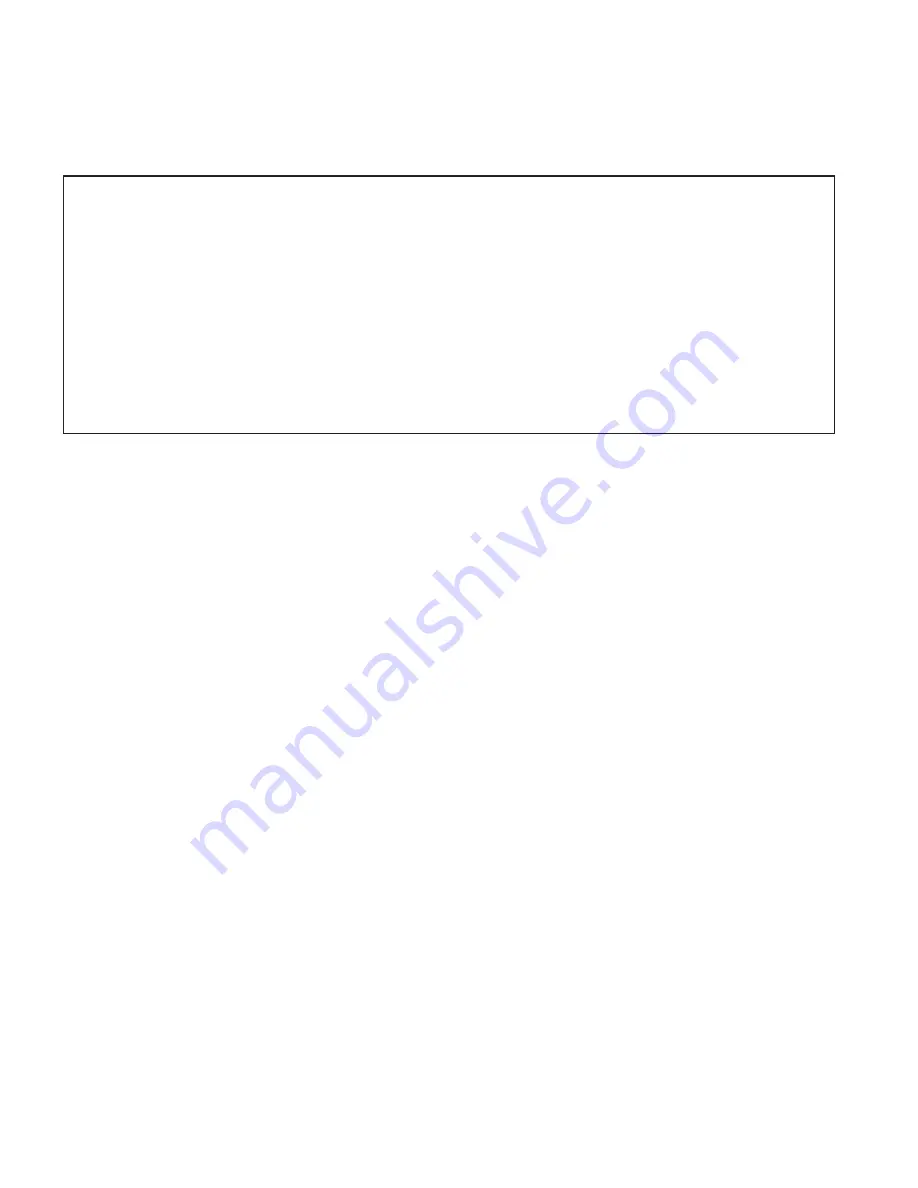
10. Handle pipe joints carefully until cement sets.
11. Support combustion air piping (if applicable) and vent piping a minimum of every 5 ft (3 ft for SDR-21 or -26 PVC) using perforated metal
hanging strap.
12. Slope combustion air piping (if applicable) and vent piping downward towards furnace a minimum of 1/4 in. per linear ft with no sags
between hangers.
13. Use appropriate methods to seal openings where combustion air pipe (if applicable) and vent pipe pass through roof or sidewall.
EXAMPLE:
An 080-12 size furnace located in Indianapolis, elevation 650 ft above sea level, could be installed as either a direct vent/2-pipe system
that requires 3 elbows and 32 ft of vent pipe, along with 5 elbows and 34 ft of combustion-air pipe OR a non-direct vent/1-pipe system
that requires 3 elbows and 32 ft vent pipe. For a direct vent/2-pipe system, Table 11 indicates this application would allow a 2-in. diameter
vent pipe, but require a 2-1/2 in. diameter combustion air pipe. According to Table 11, 2-in. diameter pipe is good for 35 ft with 3 elbows,
but only 30 ft with 5 elbows. Therefore, 2-1/2 in. diameter pipe must be used for both vent and combustion-air pipes since larger required
diameter must always be used for both pipes. For a non-direct vent/1-pipe system, Table 11 indicates that this application would allow a
2-in. diameter vent pipe.
If same installations were in Albuquerque, elevation 5250 ft above sea level:
For a direct vent/2-pipe system, Table 11 indicates that 2-1/2 in. diameter vent pipe and combustion-air pipe are required. For a non-direct
vent/1-pipe system, Table 11 indicates that 2-1/2-in. diameter vent pipe is required.
If same applications are to be installed at 5001- to 6000 ft elevation:
For a direct vent/2-pipe system, 2-in. pipe is only good for 23 ft (with 3 elbows) and 17 ft (with 5 elbows). Therefore, 2-1/2 in. diameter
combustion air and vent pipe must be used.
For a non-direct vent/1-pipe system, a 2-in. diameter pipe is only good for 23 ft with 3 elbows. A 2-1/2-in. diameter vent pipe must be used.
G.
Vent Termination
GENERAL
Combustion-air (direct vent/2-pipe system only) and vent pipe must terminate outside structure, either through sidewall or roof. For vent
termination clearance, refer to Table 8 for Direct Vent/2-Pipe system and Table 9 for Non-direct Vent/1-Pipe system. For exterior piping
arrangements, refer to Fig. 40 for Direct Vent/2-Pipe system and Fig. 41 for Non-Direct/1-Pipe system.
Roof termination is preferred since it is less susceptible to damage or contamination, and it has less visible vent vapors. Sidewall termination
require sealing or shielding of building surfaces with a corrosive resistance material due to corrosive combustion products of vent system.
NOTE:
(Direct Vent/2-Pipe system ONLY). A factory accessory termination kit MUST be used. See section
″
Vent Termination Kit (Direct
Vent/2-Pipe System Only)
″
in this instruction.
When determining appropriate location for termination, consider the following guidelines:
1. Comply with all clearance requirements stated in Table 8 or Table 9 per application.
2. Termination or termination kit should be positioned where vent vapors will not damage plants/shrubs or air conditioning equipment.
3. Termination or termination kit should be positioned so that it will not be affected by wind eddy, such as inside building corners, nor by
recirculation of flue gases, airborne leaves, or light snow.
4. Termination or termination kit should be positioned where it will not be damaged by or subjected to foreign objects such as stones, balls,
etc.
5. Termination or termination kit should be positioned where vent vapors are not objectionable.
EXTENDED EXPOSED SIDEWALL PIPES
Sidewall combustion air pipe termination (direct vent/2-pipe system only) and vent pipe termination may be extended beyond area shown in Fig.
40 or in Fig. 41 per application in outside ambient by insulating pipe as indicated in Table 10.
1. Determine combustion air pipe diameter (direct vent/2-pipe system only) and vent pipe diameter, as stated above, using total pipe length
and number of elbows.
2. Using winter design temperature (used in load calculations), find appropriate temperature for your application and furnace model.
3. Determine required insulation thickness for exposed pipe length(s).
NOTE:
Pipe length(ft) specified for maximum pipe lengths located in unconditioned spaces cannot exceed total allowable pipe length as specified
in Table 8.
VENT TERMINATION KIT (DIRECT VENT/2-PIPE SYSTEM ONLY)
NOTE:
Always refer to the instructions in termination kit for the latest version.
Combustion air and vent pipes MUST terminate outside structure. A factory accessory termination kit must be installed as shown in Table 12.
There are four options of vent/combustion air termination kits available as shown in Table 12.
NOTE:
Combustion air pipe must have the same diameter as vent pipe.
CONCENTRIC VENT/COMBUSTION AIR TERMINATION KIT
Determine an appropriate location for termination kit using the guidelines provided in section
″
Vent Termination: General
″
in this instruction.
1. Cut one 4-in. diameter hole for 2-in. kit, or one 5-in. diameter hole for 3-in. kit.
2. Loosely assemble concentric vent/combustion air termination components together using instructions in kit.
—46—
→
→
















































